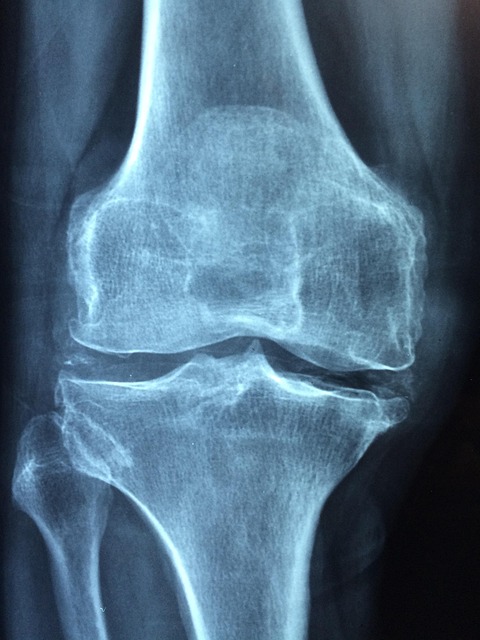Advanced imaging technologies like real-time 4D ultrasound revolutionize minimally invasive surgery (MIS) planning by offering dynamic, 3D visualizations of surgical sites in real time. This enables surgeons to assess organ movement, predict tissue interactions, and plan precise incisions, enhancing accuracy, reducing complications, and improving patient outcomes, especially for complex abdominal and pelvic procedures.
“Revolutionize surgical planning with cutting-edge technologies—3D and 4D imaging. This advanced approach is transforming minimally invasive procedures, offering unprecedented precision and visualization. Enhance surgical outcomes by exploring the power of 3D models for preoperative assessment. Discover how real-time 4D ultrasound navigates complex anatomies, providing dynamic insights during surgery. From improved patient care to enhanced operational efficiency, these imaging techniques are game-changers in modern healthcare.”
Enhancing Surgical Precision: The Role of 3D Imaging
In minimally invasive surgeries, enhancing surgical precision is paramount. This is where 3D and 4D imaging plays a pivotal role. By providing detailed, three-dimensional visualizations of surgical sites in real-time, these advanced technologies enable surgeons to plan intricate procedures with unparalleled accuracy. Unlike traditional two-dimensional imaging, 3D imaging offers a comprehensive view, allowing healthcare professionals to identify anatomical structures more precisely and navigate them during operations.
Furthermore, the integration of real-time 4D ultrasound adds another dimension by showcasing the dynamic nature of organs and tissues. This capability is particularly beneficial for assessing organ movement, understanding hemodynamics, and planning around vital structures. With these imaging tools, surgeons can make informed decisions, minimize risks, and ultimately improve patient outcomes in minimally invasive surgical procedures.
Real-Time 4D Ultrasound: Navigating Complex Anatomies
Real-time 4D ultrasound has emerged as a powerful tool in minimally invasive surgery planning, offering unprecedented insights into complex anatomies. Unlike traditional 2D imaging, which provides static snapshots, 4D ultrasound captures dynamic movements and changes over time, allowing surgeons to visualize organs and structures in their natural, functional states. This capability is particularly valuable for navigating intricate abdominal and pelvic regions, where organ mobility and spatial relationships can be critical during surgery.
By combining high-resolution imaging with real-time data, surgeons can more accurately identify anatomical landmarks, predict tissue interactions, and plan precise incisions. Real-time 4D ultrasound enables dynamic assessment of blood flow, organ motion, and potential complications, enhancing surgical decision-making and safety. This technology is revolutionizing preoperative planning, fostering more effective and safer minimally invasive procedures.
Preoperative Planning: Visualizing in Three Dimensions
Preoperative planning is a critical aspect of minimally invasive surgery, and advancements in imaging technology have significantly enhanced this process. One such innovation is real-time 4D ultrasound, which offers surgeons an unprecedented level of visualization. This technique allows for dynamic assessment of organs and structures within the body, providing a comprehensive understanding of their movement and interaction during respiration or heartbeat. By viewing in three dimensions, surgeons can identify potential issues that may be overlooked in traditional two-dimensional imaging.
With real-time 4D ultrasound, surgeons gain insights into the anatomy’s true nature, enabling them to make more informed decisions regarding surgical approaches. This technology ensures precise planning, minimizing risks and enhancing overall surgical outcomes. By visualizing organs and structures in a third dimension, surgeons can better navigate complex anatomies and tailor their procedures for optimal patient care.
Minimally Invasive Surgery: Advantages and Applications
Minimally invasive surgery (MIS) offers significant advantages over traditional open surgical procedures, especially in complex cases. By utilizing specialized instruments and advanced imaging techniques like 3D and 4D ultrasound, surgeons can gain enhanced visualization of the surgical site in real-time. This enables them to make more accurate incisions and navigate through tight spaces with greater precision, reducing potential damage to surrounding tissues.
The applications of MIS are diverse. It is particularly beneficial for procedures involving the abdomen, pelvis, and thoracic regions, allowing for smaller incisions and faster recovery times. Real-time 4D ultrasound further enhances this by providing dynamic images, aiding in the assessment of organ movement and facilitating better planning for surgical maneuvers, ensuring optimal outcomes while minimizing patient discomfort and hospital stays.
The integration of 3D and 4D imaging technologies, such as real-time 4D ultrasound, significantly enhances surgical precision and planning. By providing detailed, three-dimensional visualizations of complex anatomies, these tools enable surgeons to navigate with greater confidence during minimally invasive procedures. Preoperative analysis using 3D models allows for more accurate predictions, improving patient outcomes and reducing complications. Real-time 4D ultrasound further complements this process by offering dynamic insights, ensuring that surgical strategies remain optimal throughout the intervention. These advanced imaging techniques are transforming minimally invasive surgery, fostering better decision-making and fostering improved patient care.
